Sweet nothing
The Lounge as the physical and conceptional refuge of the mundane
30.6. —
11.8.2002
“I love voices, but not too many, and preferably so that one doesn’t understand them. I see them as abstract paintings.” (Aphex Twin)
The lounge has returned to the public spaces of the cultural landscape as a semi-private retreat. While trend researchers saw a radical withdrawal into the private sphere suggested by the term ‘cocooning’ for the 90s, there has been a surge of reorientation over the past few years. Still shielded by its ostensibly public character, the private has been forcing itself into public areas. According to Francis Müller of Hamburg’s Trendbüro, “A lounge is place where you want to be with your own kind.” This is why they are usually designed in such a way that individual groups can be in a public space and still get their share of privacy. Adding to the name marks out the lounge as an exclusive place for specific interest groups.
The need for recuperation and relaxation after hours of dancing at and events, however, was what caused the of the 90s. Four out of nine people questioned in the book considered the so-called zone as one of the most important criteria for an ideal Rave, which gave the verb its raison d'être. This is how the lounge came into being as an independent unity - an anteroom without continuation, prologue or epilogue as the main act. Expressions like , or give a name to the act of doing just nothing, reclining in a soft seat, slurping drinks to the sounds of a physically enveloping music. Similar to , the lounge has also become a favourite hang out for both the players of the night as well as their alter egos during the day.
The models for today's lounge can be found in numerous interior designs of the 60s, above all in those of Danish designer Verner Panton. The soft lines, colourful and angular fantasy landscapes that he designed for the Bayer Chemical Works for the exhibition in 1970 have attained cult status today. Even though the term did not play a role in those days, its ingredients were already manifest in comparable projects; normal upright seating furniture was out and lying around any which way between a horizontal and vertical position was in. Psychedelic colours that produced a lively atmosphere, a soft backrests and a neighbour to lean on, clothing, intoxicating music and atmosphere were the criteria for a design that expressed the mood of its time and is more relevant today than ever before.
With the re-emergence of lounge culture, even the market economy has discovered the benefits of selling the lounge. Music lounge, lounge music, lounge graphics, lounge fashion, Internet lounge, film lounge and innumerable other institutions and their attributes have proved themselves profitable as commercial propositions. The American scientist Richard McKewen describes it as follows: church, worshipers in this house of religion are expected to dress appropriately, behave in a certain manner, listen only to suitable music, participate in communion and, perhaps most importantly, take away something of this experience. Now a popular and coopted by market forces, has managed to make its way into numerous other realms: the Internet (lounge sites around the web), the music industry, film and television, cuisine, fashion etc.
The exhibition sees itself as an instrument for investigating the social conditions reflected by lounge culture and its by-products. The want of a communication hub in Kunsthaus Baselland triggered this initiative and in order to eliminate this dissatisfactory state, a lounge was installed in a singular cooperation with the Hochschule für Gestaltung und Kunst Basel der FHBB, section IN3. Today it is an integral part of the Kunsthaus. Selected by a jury, was developed for the KHBL Lounge project by Iwan Salzmann, Carla Schilling and Julia Zürcher, students of the HGK. Situated in the former industrial halls with a corrugated metal roof, the lounge itself was inspired by the typology of the space: a balcony-like protrusion, reminiscent of a veranda with a panoramic view, on the top floor of the building. In the course of the project's development, the designers found an element that is essential to the veranda and a major contributor to the feeling of relaxation and well-being: the swing. Hanging out in a swing became the appropriate synonym for their contemporary notion of. The swing itself derives its form from the circle that is adapted to physical requirements. Even if it was a purely unconscious influence, like so many other variations of the lounge, this design, too, echoes its 1968 mentor: the so-called.
Eero Aarnio's concerns in this historical, transparent acrylic and cushion cult-piece were reduction of material and the formula of ‘less is more’ propagated by Mies van der Rohe. The KHBL Lounge chairs, on the other hand, are made of polyethylene covered with felt and their creates a note of privacy and seclusion.
This exhibition has resulted from Kunsthaus Baselland's genuine needs. In search of positions in art concerned with the lounge, it found stimulating and often trans-disciplinary works that were at home in several scientific fields. Art discourse pried open the narrow boundaries between the disciplines over a decade ago with the term , and recognised the fact that art not only incorporates the achievements of other fields but also collates the results of its own investigations with those of other disciplines.
Text from Sabine Schaschl
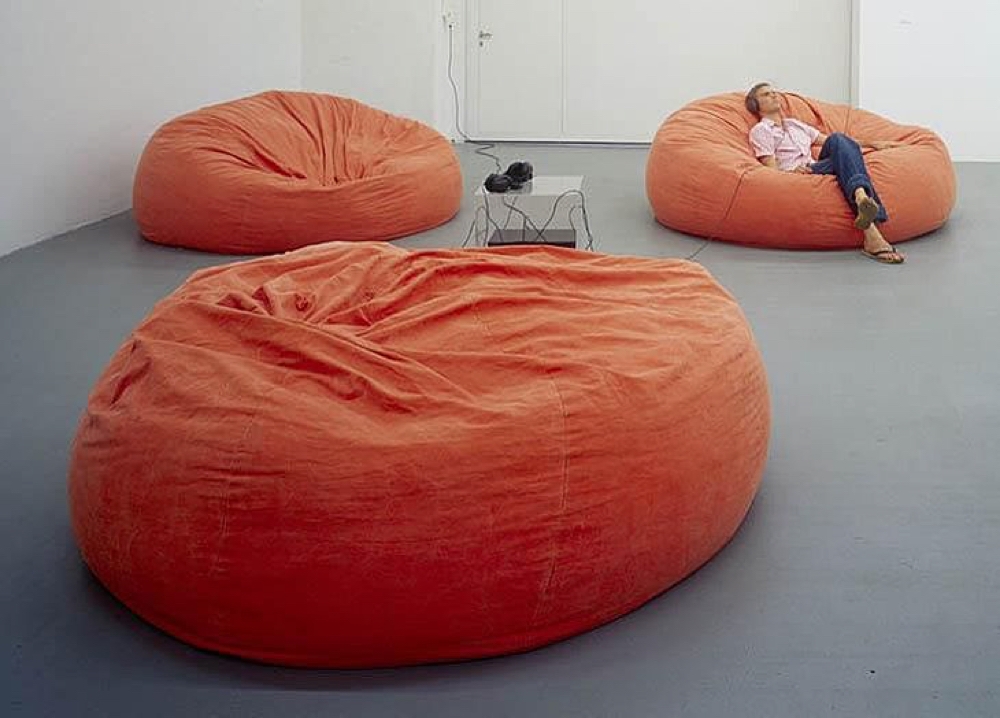
In the work presented at the show, Angela Bulloch’s interest lies in the spectator’s point of view. By bringing in the authority of the object.
As she herself says, “I’ve become bored by the conventions in museums and the erect authority of the object. By lying down and looking horizontally it relativises the object’s authority... I first used them for an exhibition at the Hamburger Kunstverein, because I needed a position for people to really sit and spend time. After that the use became more a structure within the work — a vehicle to engage with physically...”
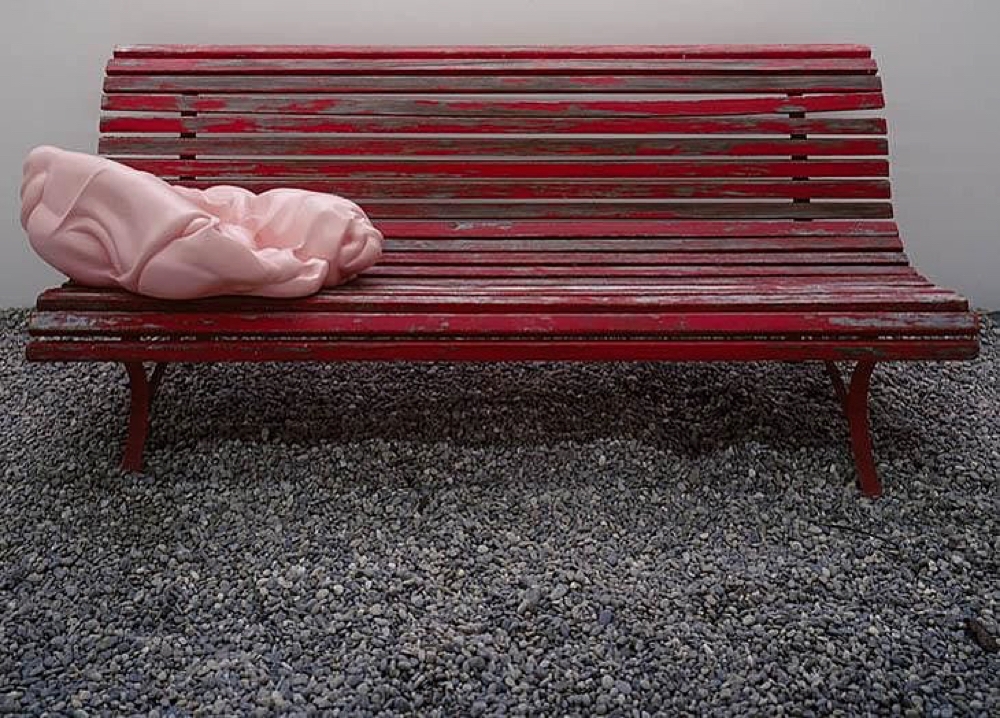
Markus Schwander has returned to his chewing gum sculptures time and again since 2000. Placed in various texts and settings, this type of sculpture has acquired a life of its own and keeps reappearing on models of meadows,of glacier crevasses or on park benches as an independent, fictitious element. This or usually found sticking to the underside of furniture is transformed through sheer scale into something so unreal that it is a breach in reality. Schwander’s sculpture in Kunsthaus Baselland is perched on a worn out park bench on a gravel bed. The three elements do not let any inhibitions toward the museum piece even emerge. The recipient who comes close to the sculpture immediately enters into a communicative relationship with it, to the extent that he/she even shares with the object its very base. Similar to Angela Bulloch’s , Schwander, too, refers to the recipient’s point of view and even puts him on the same pedestal as the object
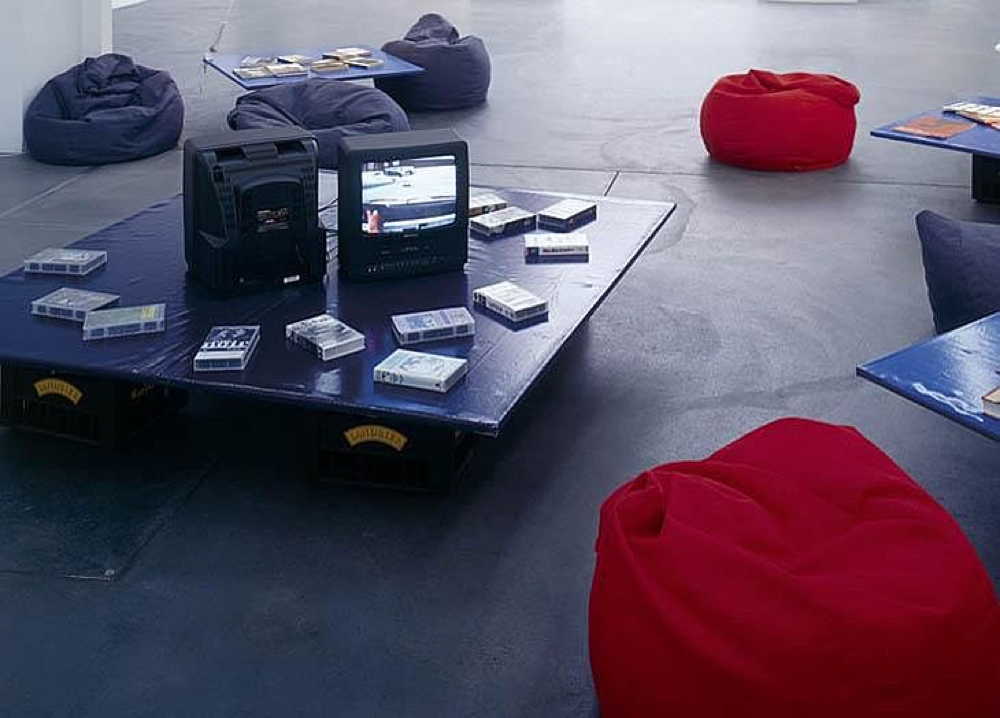
Like Bulloch, Douglas Gordon also decided for bags as seats in his installation of 1998 and has added simple tables made of beer boxes and wooden boards. The book and film lists he has put together for his Room give an insight into the sources of inspiration for this work. One of them is by James Hogg (1824), which Gordon’s video (1995/96), borrows from. Here, the artist uses the soundtrack of a film based on Robert Louis Stevenson’s (1886), and slows the increases the frame rate. Several film classics such as Alfred Hitchcock’s or Bela Lugosi’s , Philip Kaufman’s as well as several historical film highlights, a selection of books from the fields of literature, art and film can also be found in the room.
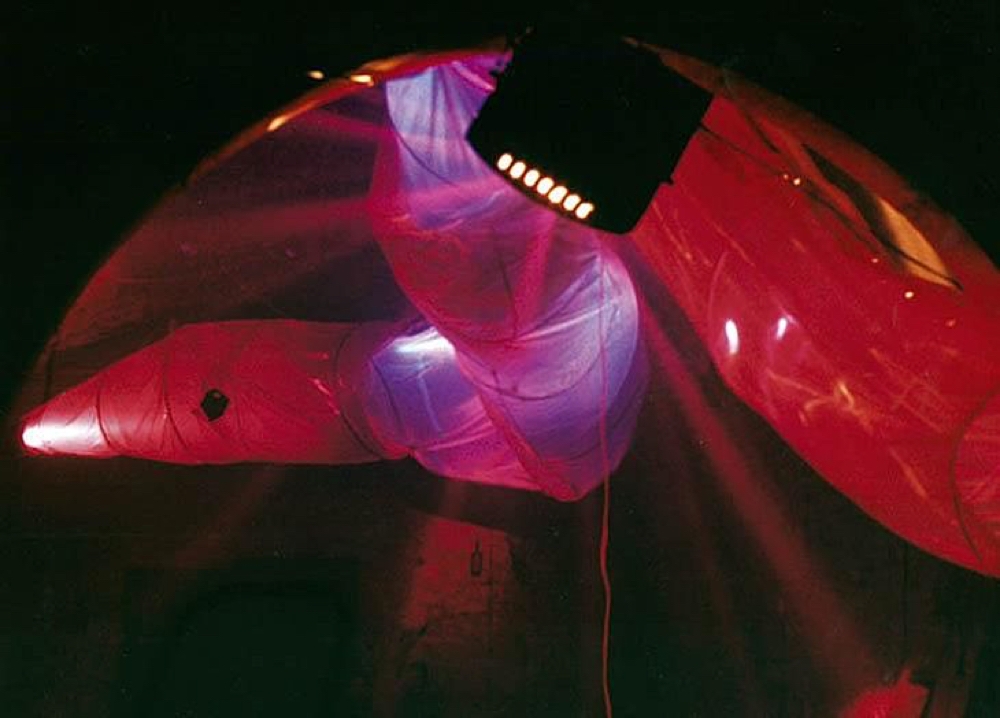
Milosz Luczynski created an uncomplicated lounge for the screening of his video on very short notice. A couple of sacks for sitting, spare mattresses and two floor fans underscore the mood of the video. A mix made with two other musicians (Johann Bourquenez and Artificiel aka DJ Cisco) is the soundtrack for a visual mix of found textual, graphic and photographic, analog and digital images. Luczynski works as disc and video jockey and is also a qualified graphic designer. He uses the recordings of two live performances (in Toulouse and Perpignan), audio and visual material as well as his own creations. As Luczynski’s work shows, political attitudes seem to take recourse in a new vocabulary that is a mixture of music, dance, image and text. The artist’s main intention is to draw the recipient into his videos by means of the synaesthetic effect of multi-disciplinary media.
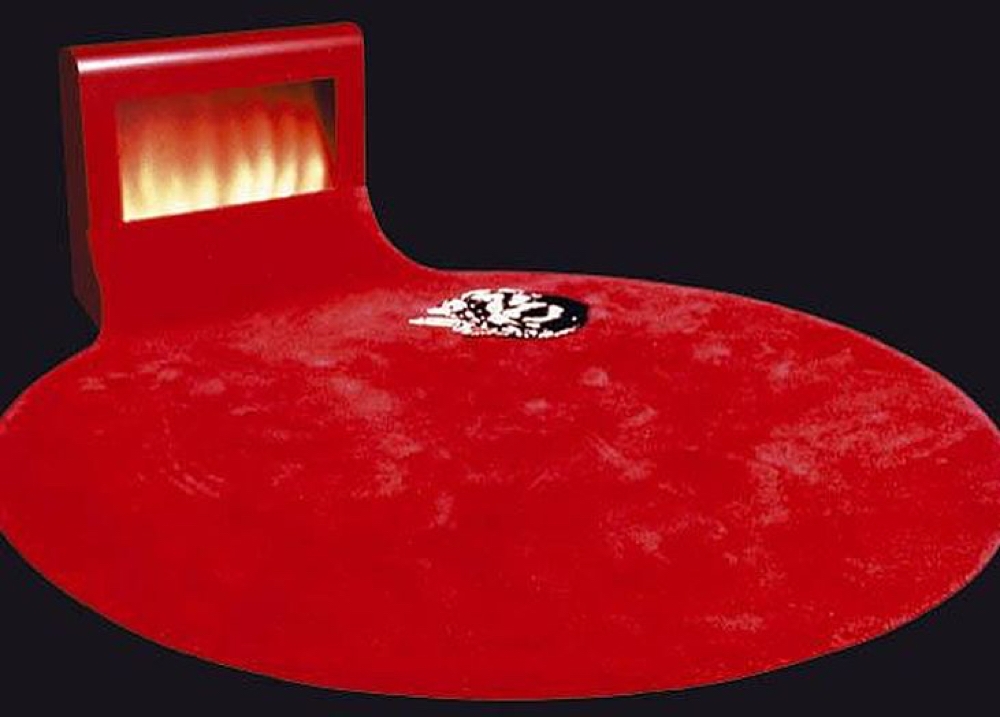
Flames dancing in a fireplace, a carpet and a cat — these are the three elements that are linked by RADI Designers in order to create a metaphor for the feeling of hearth and home. Woven into the red, round woollen carpet is a grey cat, and a red fireplace burgeons at another spot. Even though the latter works on electricity with artificial silk flames, each of the three basic elements in the work opens a mental sluice and brings in the memories of cosy hours spent before the warmth of a fireplace.
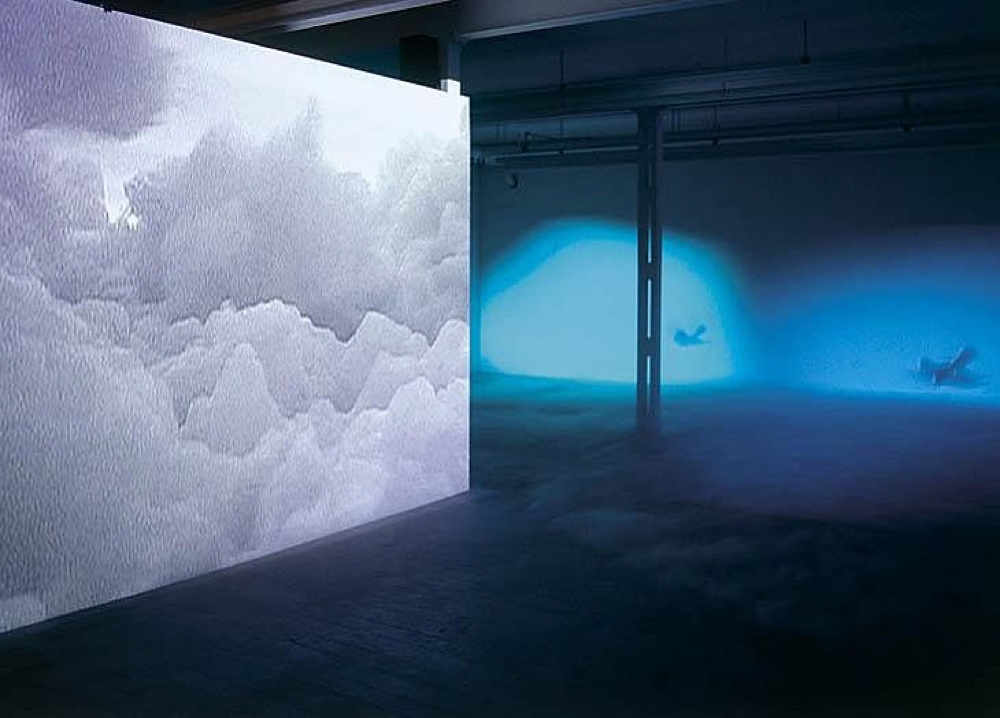
The recipient’s world of fantasy is also the material for Ursula Pallas’ video installation in Kunsthaus Baselland: When one enters the room one is steeped in an atmosphere of a cloudy night. Slowly the clouds begin to lift and a fog builds up, and the visitor is lifted off the ground, over the clouds. Floating in the clouds, surrounded by birds and paper planes or real ones, brings with it memories of flying — real or imaginary. The installation plays strongly on our primeval desire of exploring the materiality of clouds and feeling their softness despite the warnings from our causal thought processes — an actual attempt at it, however, would mean certain death.
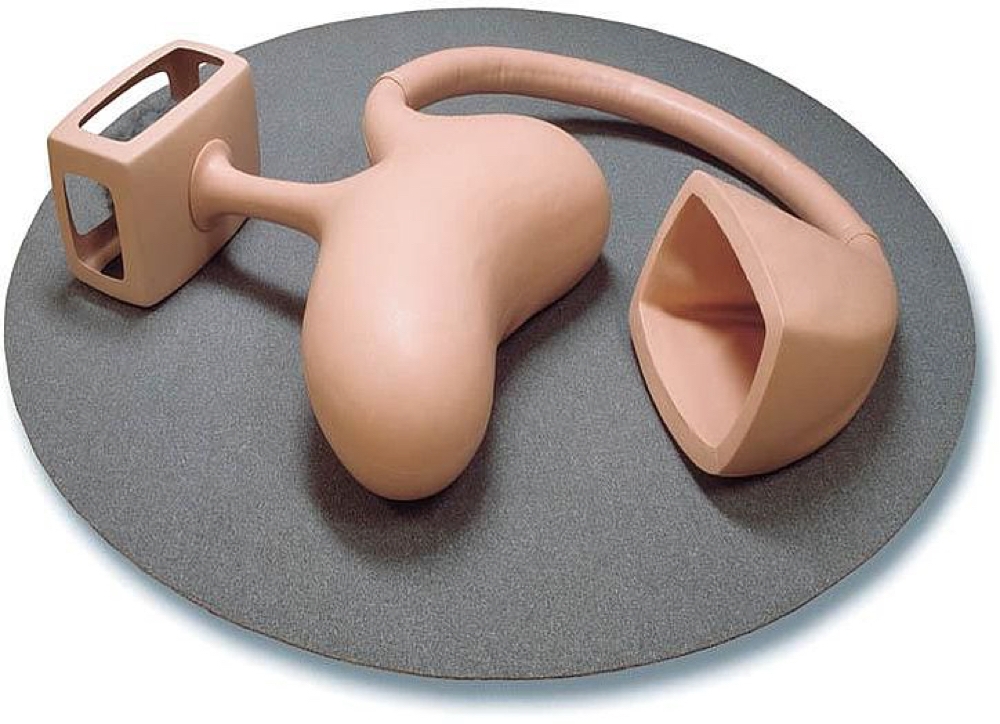
Julie Hayward identiffies parallel worlds of emotion in her sculptures. In her most recent work she looks minutely at the lives of various people for whom being at home amounts to being lulled into oblivion by the TV. This passive withdrawal to a mostly fictitious world presented on the TV screen corresponds with the sculpture on the carpet comprised of a heart, a box and parts of a TV screen. “Reality, the ostensible experience of reality, is so strong that they (the people) seem to imagine that they are actually living it. But in reality they just stare on totally mesmerised, without ever coming to themselves”, writes Hayward describing what television really is. Hayward plays on these emotions and joins the individual expressions into a coherent visual sentence.
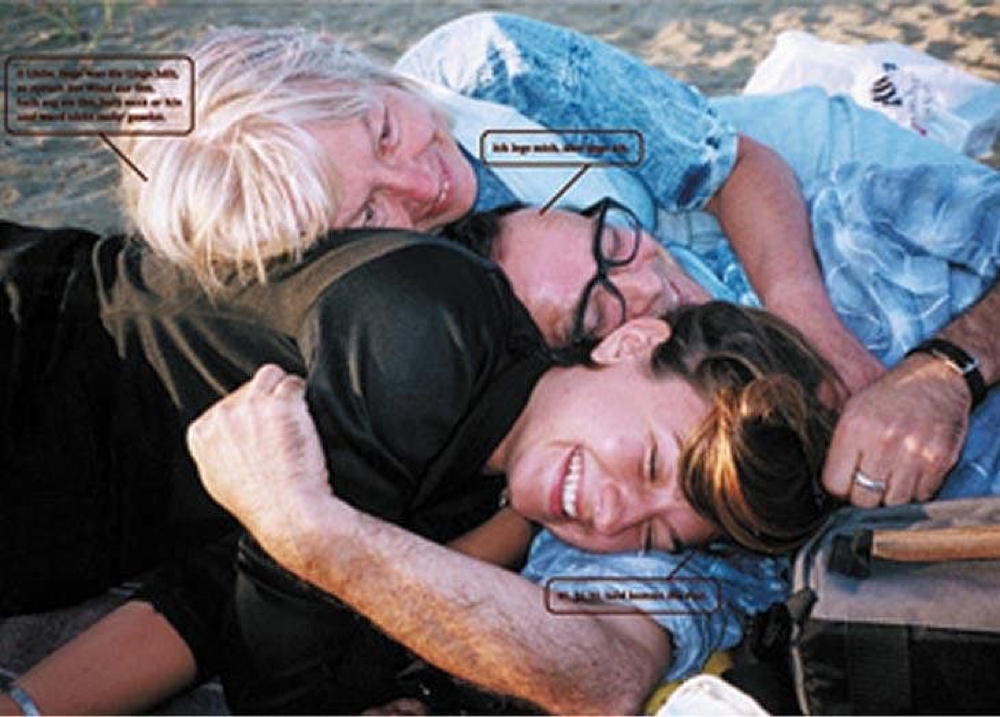
Like Hayward, Bendicht Walthert also produces psychological atmosphere in his photo scan 1.25 Meters above the sea. This image of three interlocked people lying in a meadow with various philosophical thoughts crossing their minds, thematises the act of just hanging around in the summer doing nothing. The texts in the bubbles let us participate in their thoughts: What thinks the woman in the foreground, thinks the man in the middle and thinks the second woman? “It is about lying about, being lost in dreams, about the sleep that Hölderlin calls the younger brother of death in one of his poem”, writes the artist in an e-mail.
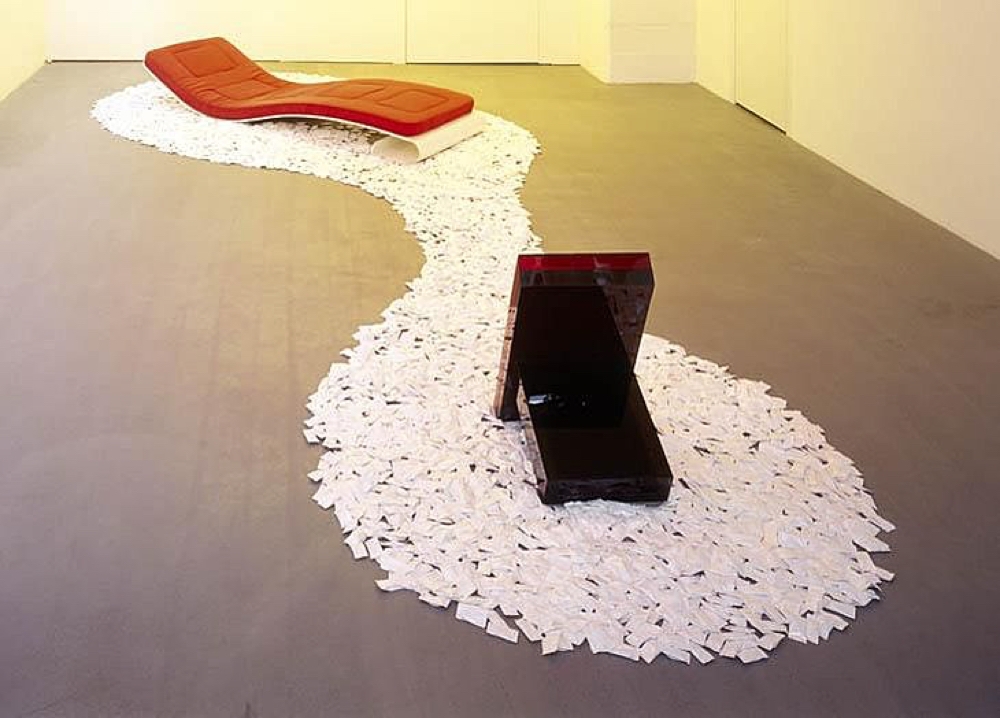
The designer group flushlab presents two prototypes. is a multi-functional piece of furniture, that can either turn from a backrest, preferably placed on a carpet, into a stool — or into a table. The size and the lines of a chaise longue, invite one to remain in it longer. Clear lines, functionality and the precise use of forms and material characterise flushlab’s principles of design.
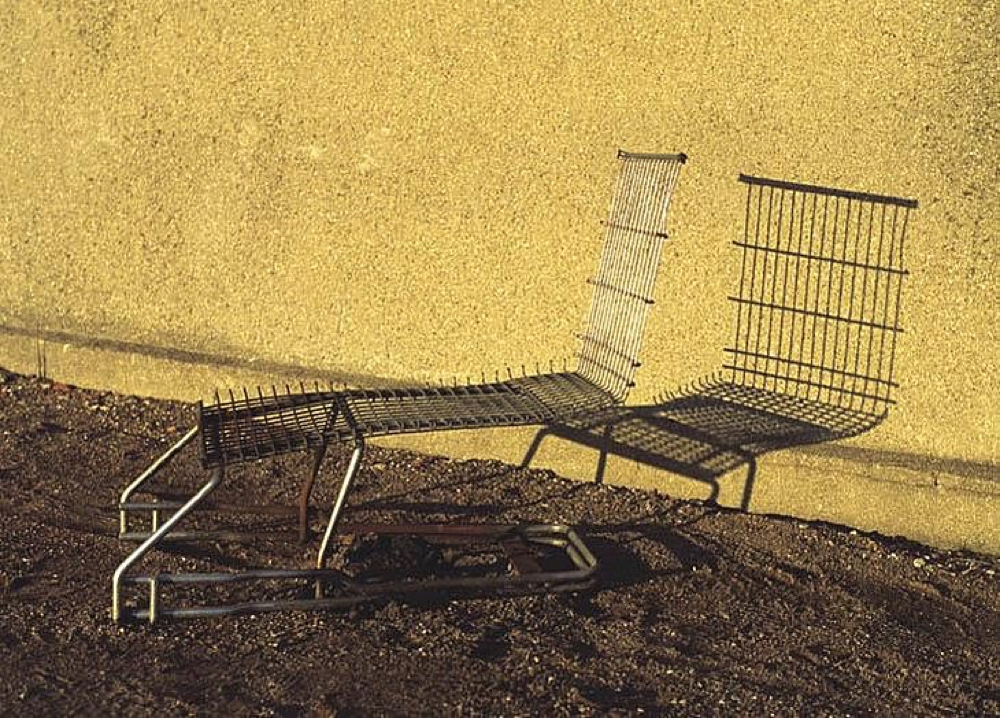
In pursuit of everyday design, the designer Jeremy Edwards captured with his camera in various cities of the world. These simple, anonymous objects usually made with a few movements of the hand bear witness to the functional creativity of people reacting to their immediate environment. The photographs present ephemeral traces of interactivity that even contain certain aesthetic criteria. Two square protrusions in a wall, for instance, can turn into two chairs when painted white — as the photographs taken in Barcelona prove, it suffices to mark just the backrest and connect it with the seat. This intellectual and conceptional design is contrasted with the idea of the as for instance in the Roman tyre-stool. The photographs visualise the atavistic and primeval desire to sit, rest and relax.
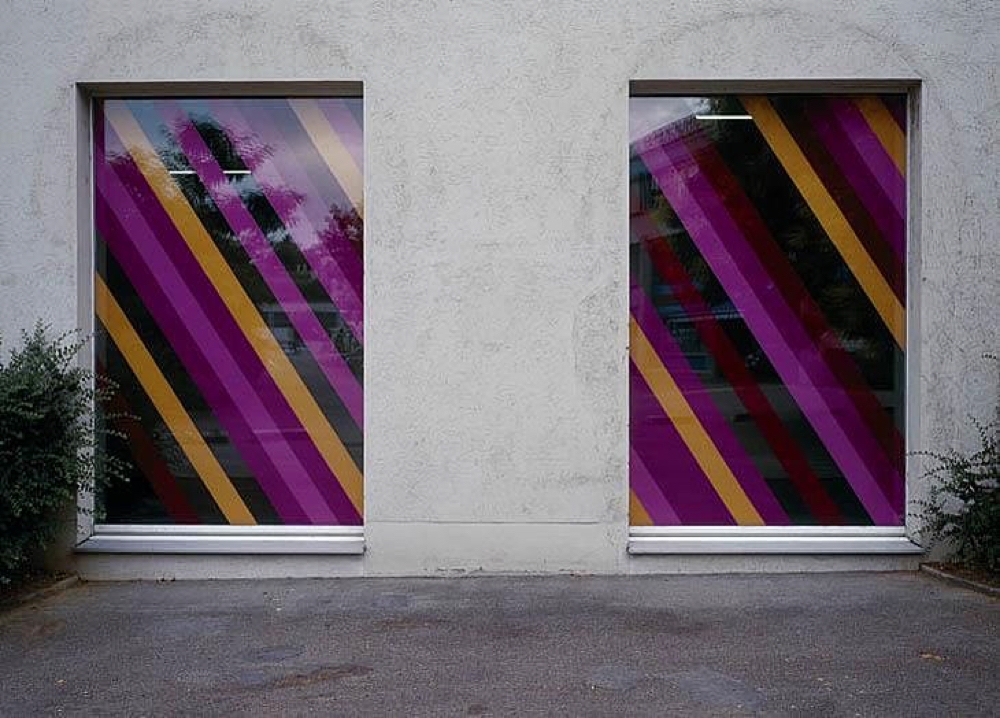
Is not only about furniture and design but also includes the fields of graphic, Internet, music or fashion. Concepts of colour are inseparable from each of the areas. When the artists group L/B designs. The stained glass windows conceived specifically for the exhibition by the artists group L/B show how important concepts of form, material and colour combinations are to their entire production.
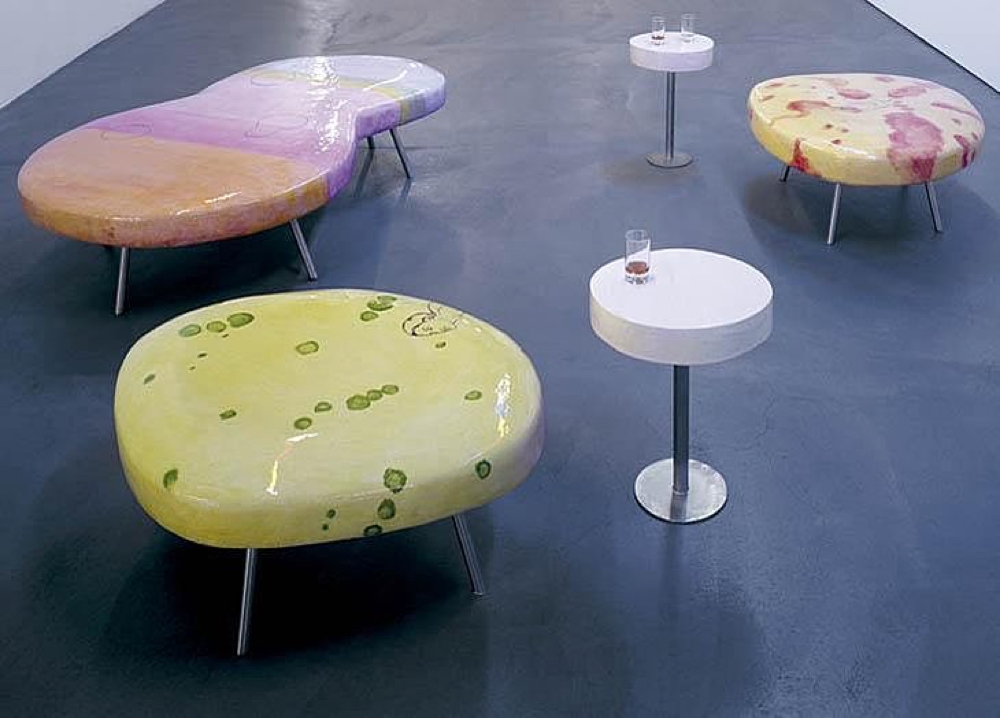
Dorothee Golz’ set of furniture for the Kunsthaus Baselland addresses several senses at the same time. I like your smell too is the title of her bonbon-like objects that are reminiscent of stools, side-tables and benches. Their colourful surfaces are coupled with drawings of portraits that add a touch of narrative to the haptic experience. Golz not only addresses the desires and longings of the recipient in her drawings, for instance, of a couple fondling each other, but the resemblance to sweets also awakens memories of sucking on them. Glasses filled with Calvados are a bridge to the title that implies a dialog through use of the word . “I am interested in exposing those aspects that are concealed within the objects and are expressed by human actions; aspects that are present in the very obviousness of the objects — often identical with its function.”
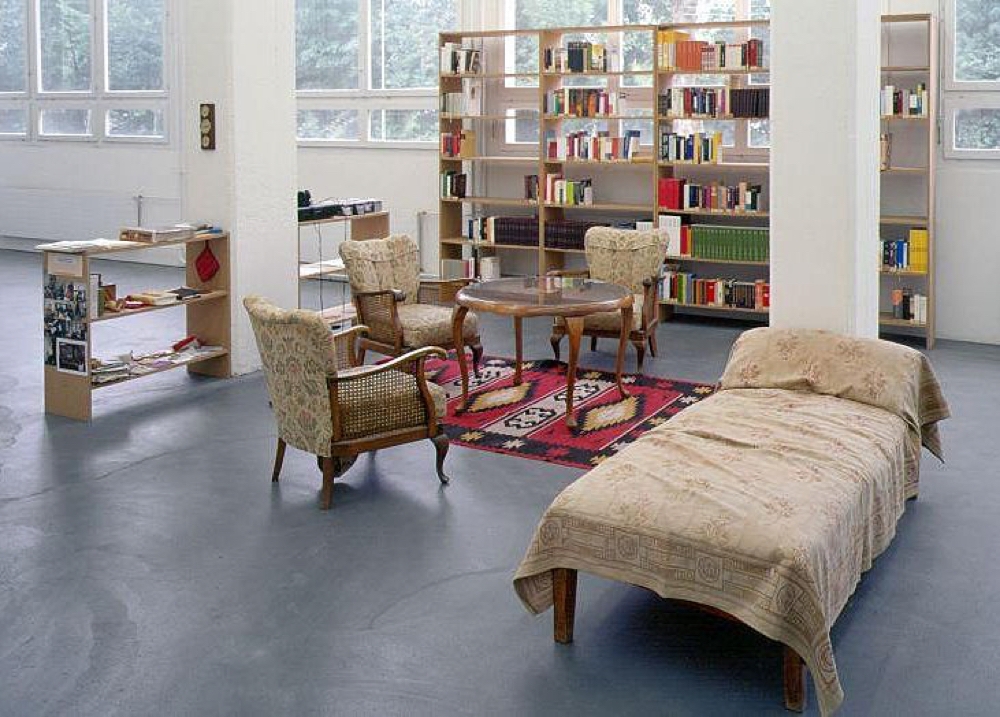
“Four fifths of humanity reads a book in the reclining posture”, says Julius Deutschbauer in an introduction to his installation at Kunsthaus Baselland. This project that began in 1997 has now been shown at various exhibitions and has in the meantime also built up a biography of its own. In interviews with people selected according to personal criteria, Deutschbauer asks the interviewee about his/her unread book and, like the librarian in Elias Canetti’s , records the weather during the time of interview as a kind of reference to the outside world. Innumerable books that were bought after the interviews are arranged according to the name of the interviewed persons who did not get round to reading it at least once before the interview. Julius Deutschbauer sees himself somewhere between the chief librarian in Musil’s and the Quaker librarian in James Joyce’s . In other words, between superficial knowledge about the book based on title and index of content and the total fulfilment of duty by the one who reads. The precision with which he executes his project informs about the phenomenlogy of reading, something not written about till today. Deutschbauer has been working with Gerhard Spring on various library-associated projects for several years. One of them that has been shown at the Kunsthaus Baselland two times. Videos without sound with a text bar, a microphone and loudspeaker are available to the visitors so that they can test their own elocution talents. The texts stemming from various sources are simultaneously entertainment, decoration and message. To borrow from Aphex Twin: “I love voices but only in moderation, and preferably if they are incomprehensible.”